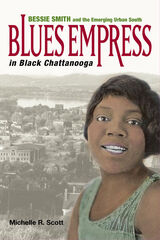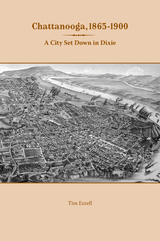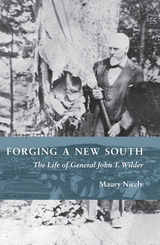
As one of the first African American vocalists to be recorded, Bessie Smith is a prominent figure in American popular culture and African American history. Michelle R. Scott uses Smith's life as a lens to investigate broad issues in history, including industrialization, Southern rural to urban migration, black community development in the post-emancipation era, and black working-class gender conventions.
Arguing that the rise of blues culture and the success of female blues artists like Bessie Smith are connected to the rapid migration and industrialization in the late nineteenth and early twentieth centuries, Scott focuses her analysis on Chattanooga, Tennessee, the large industrial and transportation center where Smith was born. This study explores how the expansion of the Southern railroads and the development of iron foundries, steel mills, and sawmills created vast employment opportunities in the postbellum era. Chronicling the growth and development of the African American Chattanooga community, Scott examines the Smith family's migration to Chattanooga and the popular music of black Chattanooga during the first decade of the twentieth century, and culminates by delving into Smith's early years on the vaudeville circuit.

After reviewing Chattanooga’s wartime experience, Ezzell chronicles political and economic developments in the city over the next two generations. White Republicans, who dominated municipal government thanks to the support of Chattanooga’s large African American population, clashed repeatedly with Democrats, who worked to “redeem” the city from Republican rule and restore “responsible,” “efficient” government. Ezzell shows that, despite the efforts by white Democrats to undermine black influence, black Chattanoogans continued to wield considerable political leverage into the 1890s.
On the economic front, an extensive influx of northern entrepreneurs and northern capital into postwar Chattanooga led to dynamic if unstable growth. Ezzell details the city’s efforts to compete with Birmingham as the center of southern iron and steel production. At times, this vision was within reach, but these hopes faded by the 1890s, and Chattanooga grew into something altogether different: not northern, not southern, but something peculiar “set down in Dixie.”
Although Chattanooga never reached its Yankee boosters’ ideal of “a northern industrial city at home in the southern hills,” Ezzell demonstrates that it forged a legacy of resilience and resourcefulness that continues to serve the community to the present day.

It is the comprehensive picture of Wilder’s nearly nine decades that Maury Nicely seeks to capture in Forging a New South: The Life of General John T. Wilder. “For many war heroes, there was not much beyond the war worth telling,” Nicely writes. “Such was not the case with Wilder.” A successful entrepreneur and industrialist, after the war Wilder relocated to East Tennessee, where he created dozens of businesses, factories, mines, hotels, and towns; was elected mayor of the city he had shelled during the war; and cultivated close personal and business relationships with Federal and Confederate veterans alike, helping to create a new South in the wake of a devastating conflict. Presented in two parts and accompanied by more than sixty detailed photographs and maps, Nicely’s balanced study fills a significant void—the first complete biography of General John T. Wilder.
READERS
Browse our collection.
PUBLISHERS
See BiblioVault's publisher services.
STUDENT SERVICES
Files for college accessibility offices.
UChicago Accessibility Resources
home | accessibility | search | about | contact us
BiblioVault ® 2001 - 2024
The University of Chicago Press









